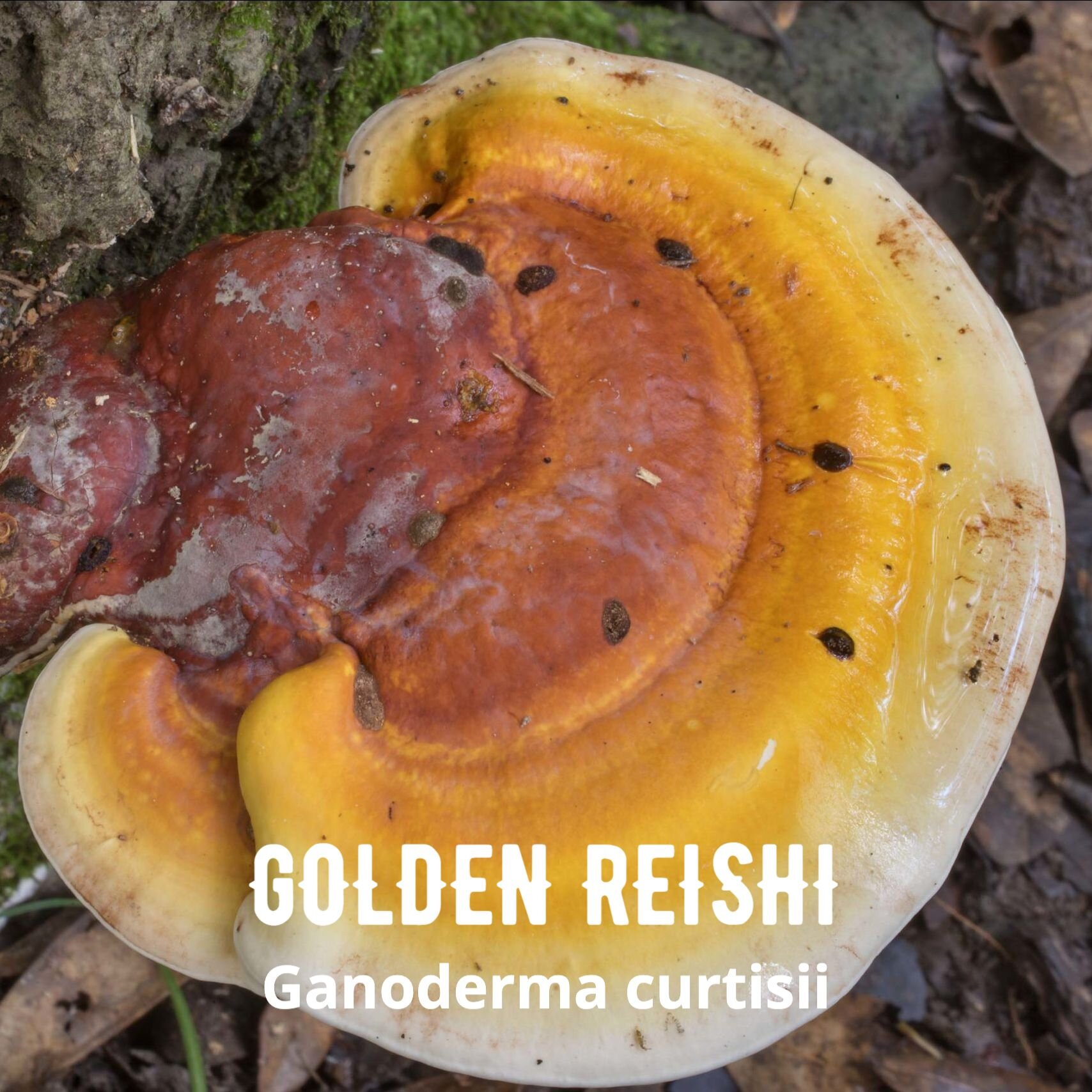September Forage Forecast
ABOVE: COTW that was "car-vested" by @forage.atx. It was spotted as she was driving 80MPH on the interstate just South of San Antonio.
As temperatures start to cool, keep a look out for the orange polypores known as Chicken-of the-Woods (COTW) Laetiporus species. This brown-rot, polypore mushroom fruits on older Texas Live Oaks that have been trimmed and have their heartwood exposed. Spores are everywhere and carry a lot of genetic information. Once a two matching spores land in the right place, the fungus will slowly colonizes and eat the heartwood of Texas Live Oaks or Quercus fusiformis. If you see a hollow Live Oak, it is likely due to a fungus parasitizing it. Once you see the fruiting mushroom, there is nothing that will save the tree from slowly decomposing and returning its nutrients back to the soil. Many times it’s not the fungi that is at fault. Human disruption, cutting down tree, and trimming trees for roads and buildings, opens the tree up to the spores that are floating everywhere and waiting for the right opportunity to have dinner. On the plus side, what they spit out is a delicious choice edible mushroom that contains, proteins, fat, fiber and tastes just like chicken!
Look for Ganoderma, the "Mushroom of Immortality" on dying or dead Pecan trees or stumps. If the top of the shelf looks red and varnished and the underside is still white, it is still good to harvest for medicinal purposes. The species shown above is more likely to be found in East Texas and in Bastrop area.
Auricularia or wood ear an edible jelly fungus pops up on downed hardwood limbs a few days after a good rain. Wood ear mushrooms are a popular ingredient in many Chinese dishes such as hot and sour soup, and are also used in Chinese medicine. It is also used in Ghana as a blood tonic. Modern research into possible medical applications has variously concluded that wood ear has anti-tumor, hypoglycemic, anticoagulant and cholesterol-lowering properties.
Favolus, or honeycomb fungus, is a genus of fungi in the family Polyporaceae. The fruit bodies of Favolus species are fleshy with radially arranged pores on the underside of the cap that are angular and deeply pitted, somewhat resembling a honeycomb. I tried a new recipe recently that has the taste and texture of chicharrones or pig's ears. I also discovered a new paper about its edibility. You can read more about it on our blog.
As always, if you are trying a new mushroom, confirm the ID with an expert, then try a small amount to make sure you don't have an allergic reaction. Texas Mushroom Identification Facebook group is great for quick responses and ID help. Also, don't forget to add your finds on the Mushrooms of Texas project on iNaturalist.
Follow my foraging adventures @forage.atx.




